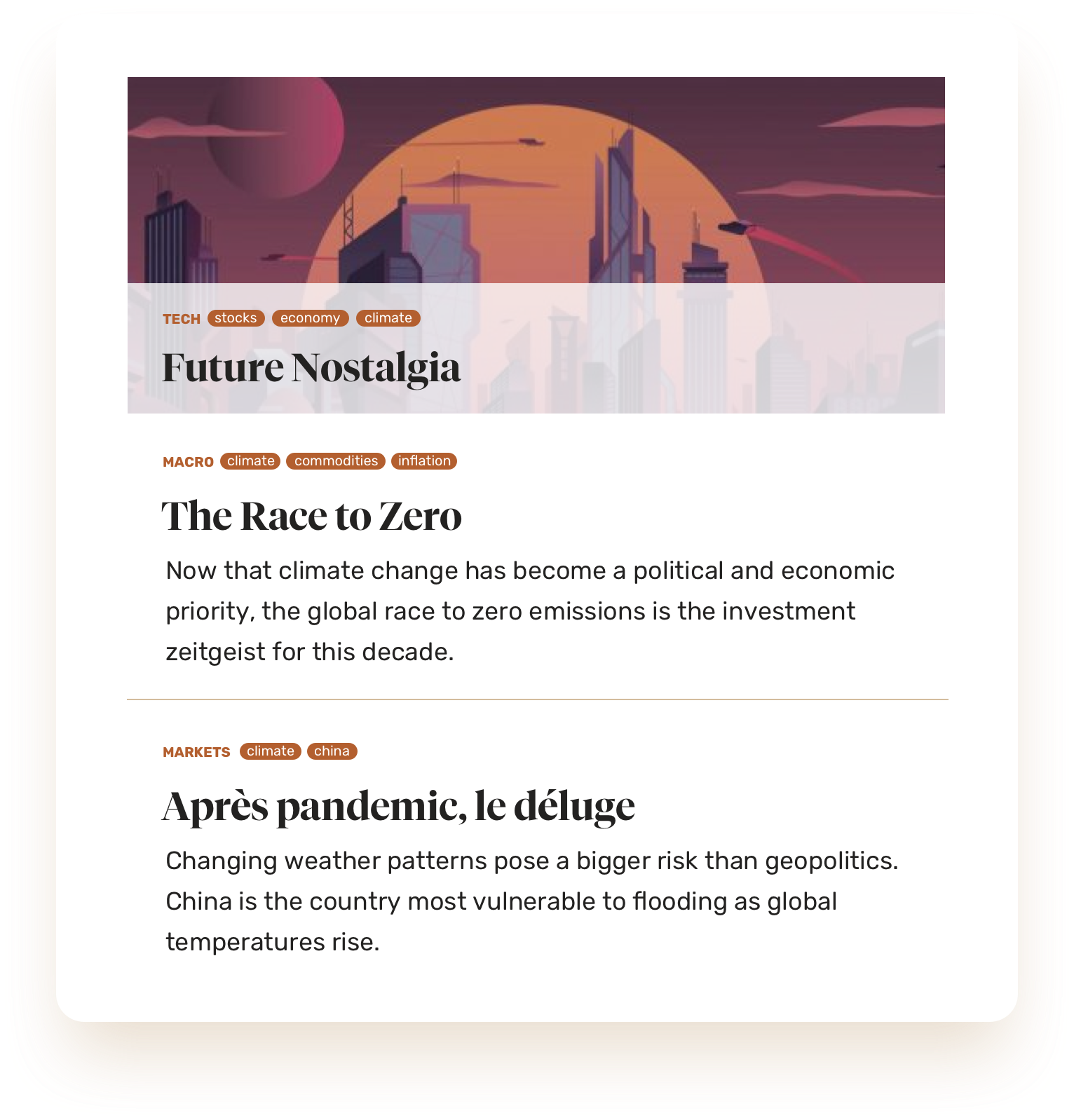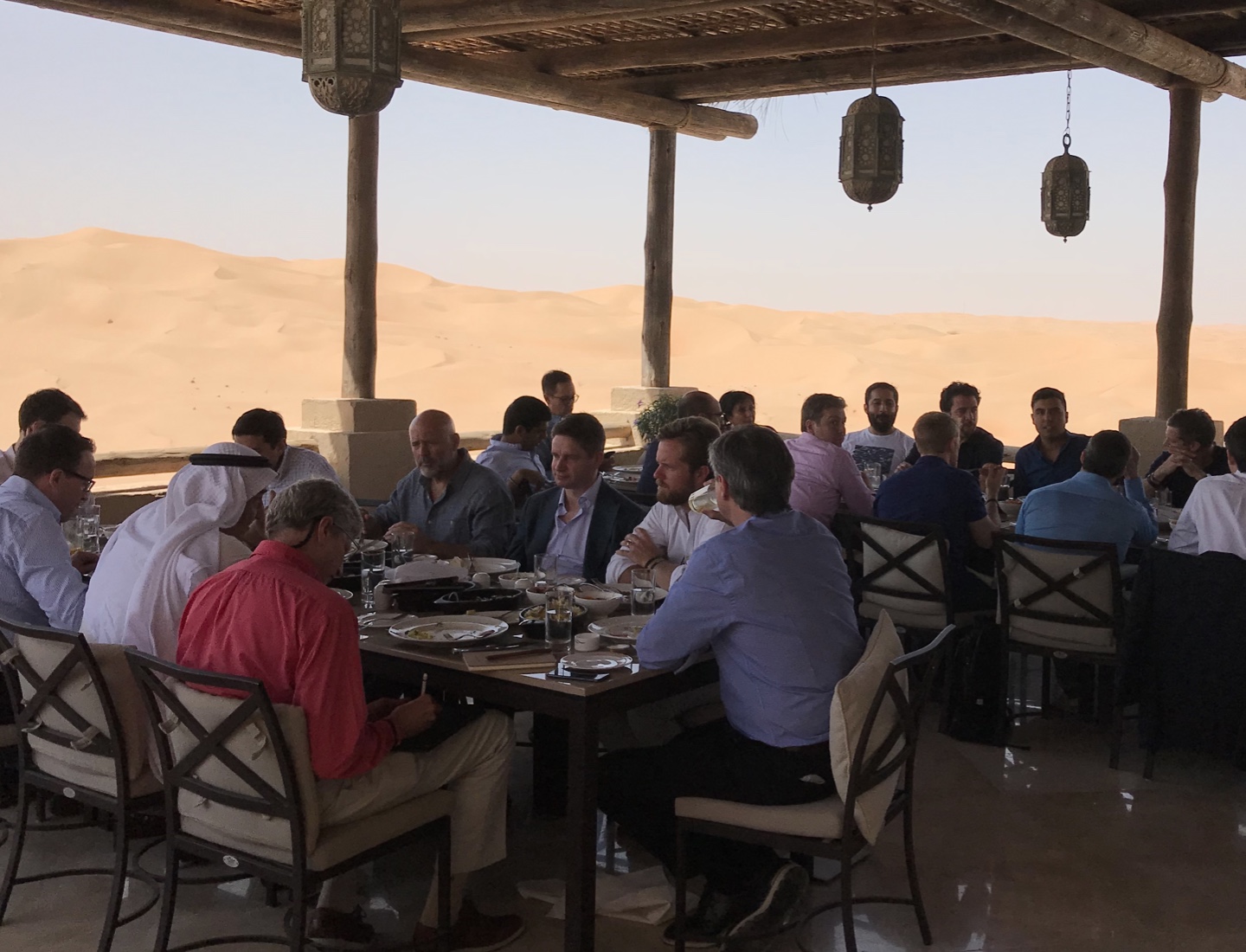Putting our heads together is what Stray Reflections does best. All of us are smarter than any of us. Here’s a summary of the most helpful insights gained from the community in our members-only Slack group last month.
1. Long Rainforests (#investingideas)
2. Short Booms (#economy)
3. Short Constraints (#macrothemes)
4. Long Devotion (#life)
5. Short Artists (#history)
Long Rainforests
JM: Is Amazon a climate play?
Amazon is funding 37 new renewable energy projects throughout the world, with a total capacity 3.5 gigawatts (GW). It’s part of Amazon’s goal to become carbon-neutral by 2040. To that end, the company intends to use renewable energy to power all of its operations by 2025.
Amazon’s new energy projects, which comprise 3 wind farms, 26 solar companies, and eight solar rooftop installations in eight countries, will bring the company’s total energy portfolio to 310. They’ll produce a total of 42,000 GW hours of renewable energy every year, enough to power 3.9 million US households for a year.
Short Booms
JM: CJ had the best chart at the San Francisco dinner. I may not have done justice to it in my notes. Curious if others have any takeaways.
CJ: I was trying to show that the most consumptive demographic or peak spenders (35 to 54 years old) is now growing for the first time in twelve years.
As a share of the population, it isn’t as dramatic as in the 1970s, but from an absolute demand basis it could create a scenario in the US few are prepared for.
SG: Lower than the 70s, but not lower than the past decade.
CJ: I agree. The only companies that ever discuss longer run consumer demographics are homebuilders and those that cater to aging boomers. The rest act as if we’re in a static environment.
Without enough capex and labor, there may be too much money/demand for the system to handle. It feels like we’re headed for a higher for longer inflation picture (maybe 3 to 4 percent for years to come).
SG: A big driver of consumption from 2017 to 2021 was wealth effect. Now it’s going full speed in reverse.
CJ: I’ve been thinking about it as the “great asset disinflation” where everything—TINA, ZIRP, COVIC, fiscal stimulus, stagnant wage growth, low inflation, passive investing—that conspired to take valuations to all-time highs across the board reverses.
The economy can perform stronger than expectations, but stocks go nowhere in general as multiples compress on a secular basis and sector rotation occurs.
Short Constraints
SG: I think of the 1998-2016 world as one where developed markets were operating under a no constraint monetary policy regime with self-imposed constraints on the fiscal policy front.
Along with significant slack throughout these economies (persistently high unemployment rate, large spare productive capacity), we saw a downward shift in trend growth accompanied by lower economic volatility outside of bust situations which were rapidly resolved by unconstrained monetary policy.
At the same time, China operated under the opposite regime: unconstrained fiscal policy and constrained monetary policy due to capital account restrictions. Potential GDP was high but also accompanied by large economic volatility, largely tied to FAI cycles.
The 2016-2021 period saw an unconstrained monetary policy matched by an unconstrained fiscal policy in developed markets. We pulled all the slack created for the past two decades into the economy in a very short period, leading to persistently low unemployment (well below economist’s NAIRU estimates).
China shifted to the opposite regime with both constrained monetary and fiscal policy in an effort to change the GDP growth model to avoid a Japanese style deflationary trend.
I now think we have entered a new regime where developed markets are constrained from the monetary side while largely unconstrained from the fiscal policy side (outside of the political opposition from non-governing parties like we are currently seeing in the US).
Slack has largely disappeared from developed economies and if the Chinese 1998-2016 model is anything to go by, we are in a high economic volatility regime but accompanied by low potential GDP growth. Expect booms and busts to be more frequent and with higher amplitude.
Eighteen month long up and down cycles will be the norm and we are probably entering an 18-month down cycle. China doesn’t seem to be moving away from the post 2016 regime of constrained monetary and fiscal policy, with again, lower potential GDP than in the previous period.
What does this mean for asset markets generally?
Higher and persistent volatility: I don’t think it’s any surprise that we continue to realize high volatility on both up and down moves. Interestingly, we are realizing higher on up moves than previously, which is what I would expect in a bear market environment.
Dispersion: we have seen sectoral/factor dispersion in equities for the past 18 months up-cycle; I think we will continue to see dispersion during the down-cycle, but it will be more intra-sector (think TGT/WMT versus Macys/Nordstrom); this will hit credit markets hard and force a repricing of risk that will become apparent once primary issuance starts again.
As a result, carry strategies that have worked for the past two decades will exhibit very low Sharpe ratio after a period of very high Sharpe ratio. It’s unclear to me if there is any trend in asset markets one can really play; maybe the indices trade in a wide range while dispersion becomes the name of the game.
Tail strategies won’t work either as the downward cycles will be cut off by fiscal policy and the starting point in terms of volatility remains too high.
Long Devotion
JM: What’s a word you wish you heard more often? For me, it’s “devotion.” Devotion to God. Devoted to a calling or career. Being a devoted husband or father.
JB: Wisdom. I see peers pursuing information, notoriety, but none are as enduring or worthwhile as wisdom.
AG: Tolerance. For all the differences in people, beliefs, systems, faiths. So that we might recognize that what makes us different is also what makes us beautiful.
JB: I think tolerance is step one. It should be followed by engagement, learning, and embracing.
KC: For me it’s not so much a word as much as it’s an energy I wish was more common. Empathy and compassion. For ourselves and one another.
PV: “I was wrong” and “I could have handled this better.”
JC: I love you and I’m sorry. So simple but can redefine relationships and releasee so much mental inertia.
AJ: Gratitude.
Short Artists
DS: This is a fascinating story about human nature.
“One of the greatest con jobs of all time almost backfired until, with a little help, the victim convinced himself his money was safe. It wasn’t.
It was Paris, 1925, and the Eiffel Tower was falling apart. Repairing the tower would be costly and its future was uncertain. This much was true. The details Victor Lustig would add, were not.
Lustig, a veteran con artist posing as a government official, gathered a half-dozen local scrap metal dealers and told them a secret. The city, unable to afford the upkeep on the tower, was planning to sell it for scrap, but due to expected controversy, needed to finalize the details before publicly announcing its plans.
The dealers were being offered the chance to buy the tower before anyone else even knew it was available. With the help of elegant clothing, faked government documents and just a bit of human greed, Lustig convinced the men that he was legitimate, secured bids from each of them, and soon selected the winner.
As the deal neared completion, Lustig became concerned about being caught and his soon-to-be victim was getting suspicious. What was Lustig to do? Try to conclude the deal as quickly as possible? Abandon the scheme?
Never. He had to reassure the mark of his honesty, but how? If he was too direct in his attempt, it might cause his mark to become even more suspicious. What he needed to do was find a way to get his victim to convince himself that Lustig was, in fact, a government official. In other words, he had to perform some act that would leave no doubt in his mark’s mind that he was legitimate.
His plan was risky. It was ingenious. And it worked perfectly.
In their next meeting, Lustig purposefully steered the discussion away from the tower and began talking about his own financial woes. As he talked, it became clear to his mark what was happening.
He wasn’t being conned; he was being asked for a bribe! Now he knew Lustig was a legitimate politician. Relieved, he handed over the bribe, concluded the deal and fell for one of the most famous cons in history.
Yet, none of it would have happened unless Lustig clearly understood that while people sometimes believe what they are told, they never doubt what they conclude.”







